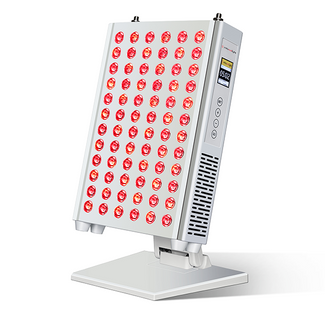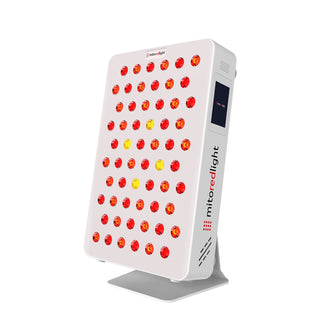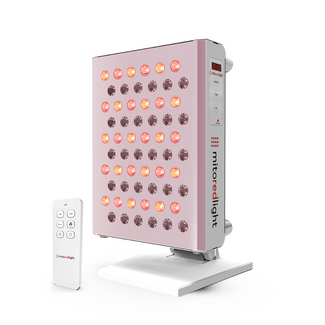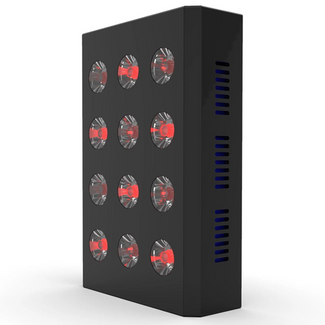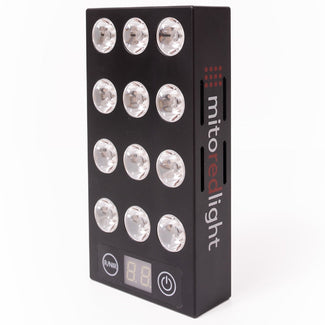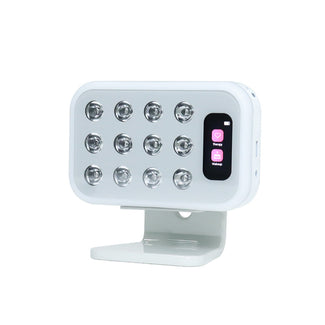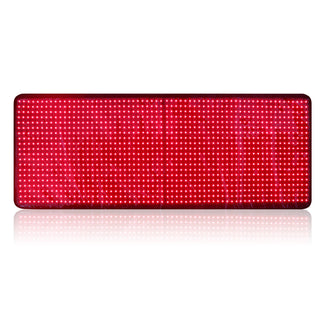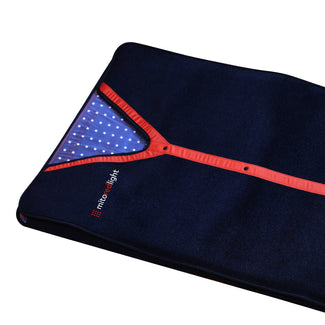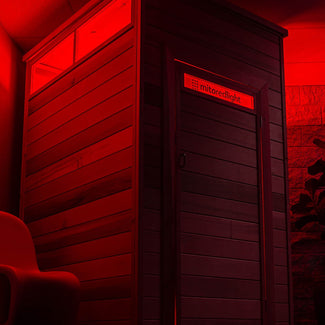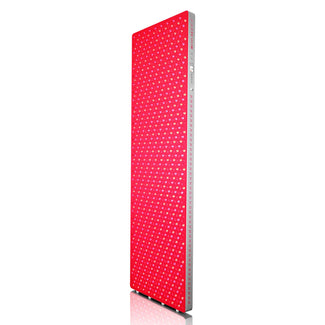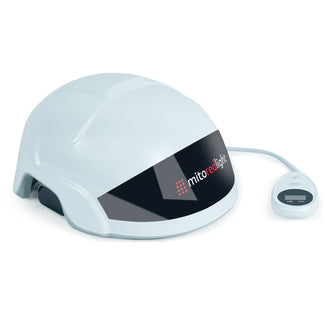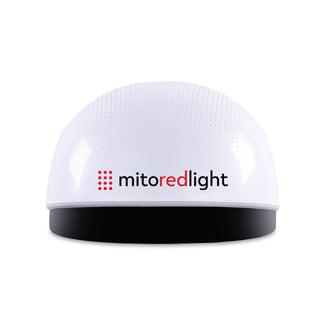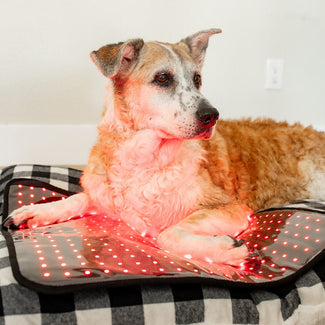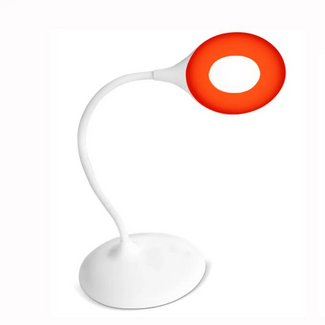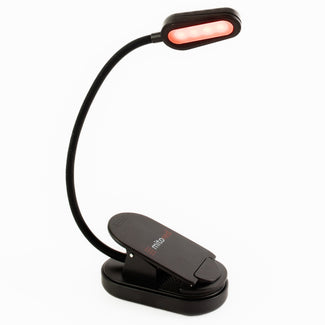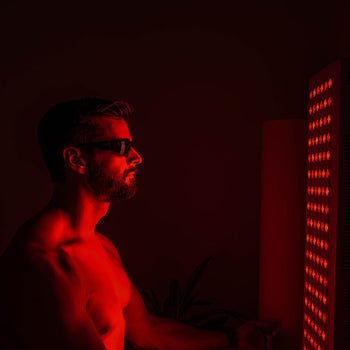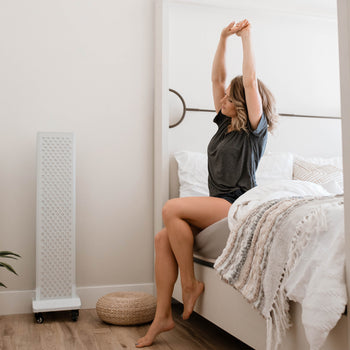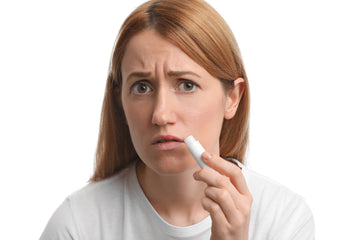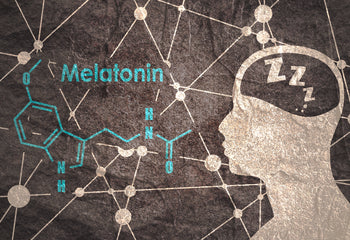Authored By Benjamin Caleb Williams
Article at a Glance
- Red light therapy is used to promote hair growth
- Hair is relatively complex, growing in distinct phases
- Hair plays many important roles, especially in a psychosocial context
- There are many different conditions that can cause hair loss, and understanding the cause of hair loss is important for treating it
- Hair health can be optimized by following tips for healthy hair
- A large body of research indicates that red light therapy is a safe and effective method for improving hair growth
Hair loss can be very frustrating, significantly impacting your appearance. Treating hair loss can be equally frustrating, and finding something that is effective and practical can be difficult. One newer technology being used to treat hair loss is red light therapy.
What is Red Light Therapy?
Red light therapy is a relatively new form of therapy that has only been around since the health benefits of red light were first recognized in the mid-1990s during a NASA experiment [1]. While modern medicine is still learning exactly how red light therapy works, it has become an increasingly popular method of improving wellness.
As it became evident that red light therapy improved cell growth and function, one potential application that emerged was using red light therapy to promote hair growth. Research is continuing to emerge supporting this use of red light therapy, and it is becoming an increasingly popular method of slowing or reversing hair loss.
Your Hair
Before understanding how red light therapy can help with hair loss, it is first necessary to cover what hair is and how it works. While hair may seem like a simple topic at first glance, there is a lot to hair and the role that your hair plays in your health and social well-being.
Hair consists primarily of strands of a protein called keratin and is made by the millions of hair follicles in your skin. Hair follicles sit under the skin and contain pores that the strand of hair will grow out of. Each hair follicle has tiny blood vessels and a tiny muscle called arrector pili muscles. These muscles contract when your skin is cold or during intense emotion, causing goosebumps.
In humans, hair does not have many physiologically important roles. Some hair does provide important protection. Hair on your eyelashes, for example, increases the sensitivity of your eyes and helps to reduce the contamination of your eyes with dust or other substances. Nasal hair can help to filter out debris as you inhale through your nose.
Hair Growth Phases
While it may seem as if your hair is just continually growing, there are actually four distinct stages that hair growth [2] in each hair follicle will undergo. The phases differ based on the type of hair and many other individual-specific factors. The different phases of hair growth include:
- Anagen Phase - Also called the growth phase, this is the longest phase of hair growth, lasting 3-7 years. During this phase, your hair will continually grow.
- Catagen Phase - Also called the transition phase, this phase is quite short. The catagen phase will last about ten days. During this time, the hair follicle will shrink, and hair growth will slow.
- Telogen Phase - Also called the resting phase, this phase will last about three months. During this phase, hair growth will stop; however, the hair will remain in place.
- Exogen Phase - This phase is also called the shedding phase and is considered by some to be part of the telogen phase. During this phase, the hair will fall out as new hair begins to grow. This phase can take 2-5 months.
The Roles of Hair
While hair does not have many important physical roles, it does have many important social implications. Healthy hair is a sign of youth and good health. How your hair is styled, how it is colored, and how you maintain and display it all have an important role in how you present yourself to others and how you are perceived.
Cosmetic
The first and most obvious role of hair is its cosmetic role. Hair has historically been associated with beauty or attractiveness, especially in women. While cultural perceptions are always changing, there are still many people who consider hair to be an essential component of their cosmetic appearance.
The existence of hair salons and barber shops shows that hair plays an important role in how we are perceived. With an entire profession dedicated to personalizing your hair and its appearance, the cosmetic role of hair is highly important
Gender
Hairstyles are often highly gender-specific. The use of hair to indicate gender is common across almost every culture and plays an important role in indicating one’s gender and attracting a romantic partner. Some hairstyles, such as growing a long, thick beard, may be used to display masculinity, for example.
While hairstyles play an important role in displaying one’s gender, it is not just the style of hair that is gender-specific. Hair growth is biologically different in males in females. The onset of baldness has different patterns in males and females. Additionally, hair growth on the face and body follows different patterns depending on biological gender. These gender-specific hair patterns are primarily influenced by hormone differences between genders.
Age
While hair can be used to display one’s gender, it is also considered to be an indicator of age. While this may occur subconsciously, most people will use hair as a guiding feature when approximating someone’s age.
There are four primary features of hair that generally affect someone’s impression of age:
- Color - Age-related changes cause hair to turn gray or white as hair follicles produce lower amounts of melanin.
- Quality - As we age, our hair can become more fine and wispy.
- Balding - Hair loss can occur with age, generally following a sex-specific pattern. Both the presence and extent of balding can be indicators of age.
- Density - Hair loss with age can also result in the presence of hair, but in fewer numbers than were previously present. Decreased density of hair can indicate aging; this is also referred to as thinning hair.
Health
Hair can also be an indicator of someone’s health, although this impression is normally more subconscious. Hair that is thin lacks its luster, or has color changes can be perceived as unhealthy. Hair is used, subconsciously and consciously, as an indicator of health because many health conditions do lead to physiological changes that impact health. Nutritional deficits, poor circulation, and skin problems can all cause physical changes that affect hair quality.
Culture
Hair has many cultural implications, with the way that it is styled varying greatly depending on the culture. Cultural norms also are often different depending on gender and social status. The way hair is cut, colored, or styled can all be an indicator of someone’s culture.
Religion
Differences in hairstyles and how hair is worn can vary significantly based on religion. Certain religions have gender-specific hair requirements, affecting how long hair can be for each gender and how it can or should be styled. Some religions require that hair be completely covered in females, while others may even encourage the use of wigs.
Social position
Hair can be an indicator of social and economic status depending on the cultural context. Those with more financial resources often can afford to spend more on maintaining their hair and caring for it. This can result in hair being an indicator of social status, especially as one ages.
Causes of Hair Loss
One of the most devastating changes that can occur to your hair is hair loss [3]. When hair changes color or quality, cosmetic interventions can quickly hide these changes. Hair loss, however, is very difficult or even impossible to conceal.
While hair loss can have a significant effect on your appearance and cause people to make inferences about your age or health, losing hair can actually occur due to several different reasons. Some of these reasons are due to specific diseases, while others are hereditary or due to your environment. The reason for your hair loss can influence how effective hair loss treatment will ultimately be.
Androgenic Alopecia
Androgenic alopecia [4] is one of the most common causes of hair loss. This form of hair loss is called male-pattern baldness in men and causes the characteristic balding pattern that some men experience. Androgenic alopecia can also affect women but does not follow the same hair loss pattern as it does in men, instead causing general thinning of the hair that does not generally lead to complete baldness.
While androgenic alopecia is a common form of hair loss, the causes of this condition are not fully understood. It is thought that it is generally due to a combination of environmental and genetic factors. Androgenic alopecia can start as early as one’s teens, and the risk of this condition increases with age.
Age
Some hair loss with age [5] is inevitable for most people. This hair loss often manifests as thinning hair. Hair strands also become thinner and contain less pigment, causing them to turn white or gray. While hair loss is likely to occur as you age, this effect is often minimal or even unnoticeable for most people.
Alopecia Areata
Alopecia areata [6] is a relatively uncommon hair loss condition in which someone’s immune system actually attacks their hair follicles, causing them to lose the hair growing in them. Alopecia areata often has a sudden onset and causes the hair to fall out in patches. In some situations, all of the hair on your head or body may be lost.
Alopecia areata is generally episodic, with some people only experiencing a single episode in their lives while others may have multiple episodes. Someone with alopecia areata will generally have their hair grow back but may have future episodes where they lose it again. With treatment, hair may grow back more quickly.
Cancer Treatment
Cancer treatment, specifically the use of certain types of chemotherapy, is well known for causing hair loss. Hair loss from chemotherapy [7] is generally temporary but often affects all hair over the entire body. Hair growth resumes after the chemotherapy treatment is completed.
Hair loss from chemotherapy occurs because chemotherapy targets cells that rapidly reproduce. Hair cells, along with the lining of your digestive tract, rapidly reproduce and are more affected.
Postpartum Hair Loss
Postpartum hair loss [8] is hair loss that occurs after giving birth. Postpartum hair loss occurs due to the fluctuations in hormones that occur during and after pregnancy. These hormonal changes will often cause increased hair growth during pregnancy.
Postpartum hair loss is often unanticipated and does not generally occur until about 4-6 months following giving birth. This form of hair loss is almost always temporary, with hair growth returning to normal within one year of giving birth. Treatment may help reduce the amount of hair that is ultimately lost or may help hair to regrow more quickly.
Telogen Effluvium
Telogen effluvium [9] is a form of hair loss caused by stress. Severe stress can release hormones that change the phase of hair growth, causing a large number of hairs to suddenly enter the resting phase and stop growing. This change causes hair loss about three months after the stressful incident and can lead to sudden hair loss, although only some of your hair will typically be affected.
The stress that causes telogen effluvium can come from many different sources. It can be due to severe emotional stress, a traumatic injury, the heavy use of drugs or alcohol, or can be caused by any other number of stresses. Some medications with hair loss as a rare side effect can cause hair loss by causing telogen effluvium.
.
Traction Alopecia
Traction alopecia [10] is a form of hair loss that is caused by continuous pulling stress on hair. This is most often caused by a tight hairstyle that pulls at hair. Traction alopecia causes hair to fall out by creating damage in the hair follicles themselves. Because this form of hair loss causes damage to hair follicles, it is generally harder to recover from, and the hair loss that does occur is often permanent. .
Scalp Infections
An infection of your scalp can cause hair loss by inflaming or damaging hair follicles. Hair loss from a scalp infection [11] generally only affects the area where there is an infection. Infection can arise from many different causes and will often require an antibiotic or antifungal medicine to treat.
Hair loss from a scalp infection will generally remain as long as the infection does and will get worse as the infection spreads in the scalp. Once the infection is treated, the hair may grow back. Whether the hair regrows or not, however, does depend on several factors, especially whether scarring of the scalp occurs
Scalp Psoriasis
Psoriasis is a skin condition that causes skin cells to grow too rapidly; this is often caused by an overactive immune system. Psoriasis often affects the scalp; a condition called scalp psoriasis [12]. This condition can affect hair follicles, keeping them from creating healthy strands of hair.
Hair regrowth can certainly occur; however, it is generally necessary to treat the scalp psoriasis first. Once psoriasis symptoms have subsided, there are treatment options that may help hair in the affected area to regrow more quickly.
Scarring Alopecia
Scarring alopecia [13] is a rare form of hair loss that is generally irreversible. This condition occurs when hair follicles become scarred due to inflammation from an underlying medical condition, an infection, or an injury. Inflamed hair follicles can become damaged and develop scar tissue. Scarring is an irreversible form of damage and makes it impossible for hair to regrow.
Nutritional Deficiency
Your hair requires several nutrients to grow effectively. Nutritional deficiencies [14] can lead to hair loss, as the body lacks the building blocks necessary to create new hair or grow existing hair. As hair is relatively unimportant compared to most of your body, your body will often conserve limited nutrients to perform important bodily functions, reducing the amount of nutrients available for hair growth.
There are several nutrients that can cause impaired hair growth when depleted. Some of the more common nutritional deficiencies are low levels of biotin, iron, protein, or zinc. Hair loss due to nutritional deficiencies will generally resolve when the deficiency is corrected.
Hair Health Tips
Your hair’s health is heavily influenced by how well you take care of your health in general and your hair specifically. There are many different things that you can do to promote good hair health [15] and avoid potential hair damage:
- Wash your hair regularly - Washing your hair and scalp on a consistent basis helps to keep them clean and free from debris that can irritate your scalp and hair follicles or that can damage your hair.
- Use the right kind of water - Ideally, you should use soft water that is not hot. Hot water can damage your hair if it is too hot. Hard water contains minerals that can build up in your hair, causing damage and slowing hair growth.
- Reduce chemical exposure - There are many shampoos and conditioners that are made up of natural chemicals. Reducing the exposure of your hair to chemicals that are in some conditioners and shampoos can improve hair quality.
- Use hair conditioner correctly - Hair conditioner can help to improve the quality of your hair; however, it should be rinsed out after it is applied. Additionally, hair conditioner should generally not be used on your scalp, only the ends of your hair. Hair condition should generally be avoided if you have a short hairstyle.
- Limit heat exposure - Heat ultimately damages your hair and should be avoided when possible. This entails avoiding blow drying your hair, allowing it to dry naturally instead. This also involves not using heat tools, instead styling your hair naturally.
- Avoid pulling - Pulling at your hair can cause stress or even damage to the hair follicles that your hair relies on for continued growth. Using a wide-tooth comb and avoiding hairstyles that cause parts of your hair to pull on the scalp will help to reduce possible stress on the hair follicles.
- Massage your scalp - Massaging your scalp can help to increase blood flow to your hair follicles, encouraging their growth and their health. Massaging your scalp on a regular basis, such as whenever you shower, will help promote hair health.
- Trim split ends - The ends of your hair can split, causing damage that can damage your hair and cause slowed growth. By trimming your split ends on a regular basis, you can help promote hair growth.
- Protect from sun exposure - Sun can damage your hair just like it can damage your skin. Sun exposure can also damage your scalp, affecting your hair follicles. Avoiding prolonged outdoor exposure or wearing a hat to protect your hair can help keep your hair healthier.
- Stay hydrated - Hydration helps prevent your hair from becoming dry. Drinking plenty of water promotes your health in many different ways but does have an effect on hair health.
- Avoid stress - Stress can release hormones that impair or slow hair growth. Reducing exposure to stress and learning new coping mechanisms that allow you to effectively manage stress can help promote hair health.
- Eat well - Nutrition plays an important role in hair growth and health. By eating a healthy, well-balanced diet, you can help optimize your hair health. Using a daily nutritional supplement can also improve hair health.
- Avoid unhealthy substances - Hair health can be impacted by alcohol use, tobacco use, or the use of recreational drugs. Avoiding these substances altogether is optimal; however, even reducing their use can improve your hair health. Additionally, some medications can impact hair health.
Red Light Therapy for Hair Growth
Many people have used red light therapy to successfully improve hair growth and there is a wide body of research supporting the use of red light therapy to stimulate hair regrowth. The effects of red light therapy that have been seen, however, do vary based on the cause of hair loss. For example, hair loss caused by scarring or permanent damage to hair follicles is not likely to regrow when red light therapy is used. Red light therapy can, however, be used for most forms of hair loss.
How Does it Work?
Red light therapy uses specific wavelengths of red and infrared light that are thought to be absorbed by a molecule called cytochrome C oxidase [16]. This molecule is present in the mitochondria of your cells and plays an essential role in cell metabolism and energy production. While research into how red light therapy works is still ongoing, most red light experts agree that it is the stimulation of cytochrome C oxidase that ultimately increases cells’ energy production.
Red light therapy is also thought to increase levels of nitric oxide [17] in the areas that are treated. This chemical dilates blood vessels, improving circulation where it is released. The increased circulation, coupled with increased energy production, is likely what causes red light therapy to stimulate hair growth.
What Does the Research Show?
There is extensive research into how red light therapy affects hair growth. Research on the topic can be categorized as reviews or as experimental research. Reviews tend to analyze a large number of published studies, looking for overall patterns and trends that can be gained by combining research. Experimental studies, on the other hand, involve experimentation and tests. These studies either look for the presence of an effect and how relevant it is or examine the mechanisms by which red light therapy creates its effects.
Reviews
There have been many reviews of hair-related red light therapy research. These reviews help researchers understand the current state of research, patterns that exist in multiple studies, and new directions for further testing. Some of the more prominent reviews on the topic include:
- A review published in 2012 in the Dermatology Online Journal [18]. The review summarized cases in which lasers were used to deliberately remove hair, as well as studies in which red light was used to promote hair growth. The researchers noted that undesirable hair growth was a potential side effect of using lasers to remove hair and that using red light treatments did promote hair growth.
- A 2014 literature analysis published in Lasers in Surgery and Medicine [19]. The researchers found that using red light therapy treatments to promote hair was safe and effective. The research from 2014 noted that, at that time, the optimal wavelength, use, and dosages still needed to be determined.
- A 2019 Dove Medical Press-published review [20]. This review summarized research on the mechanisms of how red light therapy benefited several different types of hair disorders. It also evaluated different devices that had been studied and summarized multiple clinical trials.
- An analysis [21] published in 2020 in Skin Appendage Disorders. This review examined multiple other studies, exclusively evaluating the safety of red light therapy for treating hair loss. This study found that the devices used had good safety profiles and that only minor adverse effects were reported across multiple studies. This review demonstrates how safe red light therapy can be as a method of promoting hair growth, especially when compared to medications or surgical interventions.
- A review published in the Journal of Laser Applications in 2020 [22]. Researchers performing this review focused on randomized controlled trials, a robust study model. During this review, the researchers concluded that patients using red light therapy experienced improved hair growth when compared to control groups. They also noted that more large-scale studies were necessary to further verify their research.
- A 2020 review [23] published in Photodermatology, Photoimmunology & Photomedicine. This research found that red light therapy is safe and potentially effective. It also discussed how home-use devices provided an effective and easy means of using red light therapy.
- A comprehensive review of combination treatments [24] published in 2021 in the Journal of Cutaneous and Aesthetic Surgery. This review examined fifteen studies and found that red light therapy, combined with one of two different drugs approved to treat androgenetic alopecia, was more effective than the use of medication by itself.
A 2021 review [25] published in the Journal of Clinical and Aesthetic Dermatology. This analysis showed that red light therapy was potentially effective for hair loss; however, it also recommended that those with severe hair loss could benefit more from combining standard treatments and red light therapy than using either on its own.
Efficacy Studies
While reviews provide a good overview of the big picture, there are also numerous studies that used scientifically sound research methods to empirically evaluate the effectiveness of red light therapy. Some of the more notable of these studies include:
- A study [26] published in 2007 in the Journal of the American Academy of Dermatology used both red and infrared light to stimulate hair growth in 24 male patients who received 14 weeks of treatment. This study found that treatment resulted in significant increases in hair density without causing negative side effects.
- Another study [27] in 2013, also published in Lasers in Surgery and Medicine, found that using red wavelengths of light alone led to “significantly improved hair counts in 44 males with androgenetic alopecia [male-pattern baldness]”.
- A 2014 experiment [28] published in Lasers in Surgery and Medicine in 47 females found that using red wavelengths of light increased hair growth by 37% when compared to a placebo group.
- An American Journal of Clinical Dermatology-published study [29] in 2014. The experiment was a sham device-controlled, double-blind clinical trial and included 146 males and 188 females with pattern hair loss. The researchers noted, “We observed a statistically significant difference in the increase in terminal hair density” when comparing the test group and control group.
- A 2020 experiment [30] published in Medical Lasers. This study followed 48 people using home-use red light therapy to treat hair loss. The study was 16 weeks long and was a randomized, double-blind, sham device-controlled study. The researchers found that using red light therapy to treat hair loss was an “effective and safe treatment modality.”
- A study [31] published in 2022 Photobiomodulation, Photomedicine, and Laser Surgery. In this experiment, the researchers followed 25 men using red light therapy. The researchers noted that most of the increased hair density experienced was in the first five weeks of treatment.
- An animal experiment [32] published in Medical Lasers in 2023. This experiment used mice to measure the effects of red light therapy on hair growth. The researcher found that increasing the module numbers, power, and treatment numbers all had potential effects on hair regrowth when using red light therapy.
- A 2023 study [33] published in the Indian Journal of Dermatology. This study was a 24-week trial that included 50 participants. The treatments were able to improve the appearance of the hair, thickening and increase the density of the hair, and improve scalp conditions by decreasing oil production in the hair.
Uses and Mechanisms
In addition to the many studies examining whether or not red light therapy actually improves hair growth, there are several studies that test how red light therapy should practically be used and how it works.
- An experiment [34] published in the Journal of Cosmetic and Laser Therapy in 2008. This research followed seven patients and found that red light therapy offered a promising alternative to those who did not want to have hair transplantation and who did not respond to the medications finasteride or minoxidil. This study helped to identify red light therapy’s potential place in medical treatments for hair loss.
- A study [35] in 2021 that was published in Stem Cell Reports. This research experimented using mice and found a potential mechanism for how red light therapy improves hair growth. The study found that red light therapy may activate hair follicle stem cells and alleviate hair follicle atrophy.
- Research [36] published in the Annals of Dermatology in 2021. This study used hair follicles that were grown outside of the body and experimented on. The researchers found that red light hanged gene expression in a way that enhanced biological processes and stimulated hair follicles.
- A 2022 study [37] published in Applied Sciences combined red light therapy with micro-needling, finding that this treatment combination was significantly effective at stimulating hair growth.
- A Lasers in Medical Science-published study [38] in 2022. This study only followed one device but aimed to determine the treatment time needed to achieve full results using red light therapy. The researchers found that using red light therapy for 1 year or 180 times correlated with long-term success for the 1383 patients involved in the study. They also found that male patients with dandruff, rash, and itchy symptoms in scalps tended to benefit most from the treatment.
Mito Red Light
Not all red light therapy devices are created equal. For red light therapy to be worth the investment, you need a high-quality, independently tested, professional red light therapy device from a reputable company. With over 5 years in business and over 65,000 ecstatic customers, Mito Red Light is a brand you can trust. Our reviews speak for themselves and you can also click to review some of our customers' red light therapy before and after examples.
We welcome you to review our wide selection of high-quality red light therapy helmets including our red light LED / laser helmet and our MitoGROW Helmet or to contact one of our representatives at 1-866-861-MITO.
Related Articles:
- What Is Red and Near Infrared (NIR) Light Therapy?
- Red Light Therapy Buyer’s Guide
- Everything You Need to Know About Red Light Therapy and SKIN
- Effectiveness of Red Light Therapy for Hair Growth: - Researchers Weigh In
References:
- NASA. (2022, May 19). NASA Research Illuminates Medical Uses of Light. https://spinoff.nasa.gov/NASA-Research-Illuminates-Medical-Uses-of-Light
- Oh, J. W., Kloepper, J., Langan, E. A., Kim, Y., Yeo, J., Kim, M. J., Hsi, T.-C., Rose, C., Yoon, G. S., Lee, S.-J., Seykora, J., Kim, J. C., Sung, Y. K., Kim, M., Paus, R., & Plikus, M. V. (2016). A guide to studying human hair follicle cycling in vivo. Journal of Investigative Dermatology, 136(1), 34–44. https://doi.org/10.1038/JID.2015.354
- American Hair Loss Association. (2022). Home Page. https://www.americanhairloss.org/
- MedlinePlus. (2023, July 27). Androgenetic alopecia. National Library of Medicine. https://medlineplus.gov/genetics/condition/androgenetic-alopecia/#causes
- Brodkey, F. D., Dugdale, D. C., Conaway, B., & A.D.A.M. Editorial team. (2022, July 21). Aging changes in hair and nails. MedlinePlus. https://medlineplus.gov/ency/article/004005.htm
- National Institute of Arthritis and Musculoskeletal and Skin Diseases. (2021, April). Alopecia Areata. https://www.niams.nih.gov/health-topics/alopecia-areata
- Saraswat, N., Chopra, A., Sood, A., Kamboj, P., & Kumar, S. (2019). A Descriptive Study to Analyze Chemotherapy-Induced Hair Loss and its Psychosocial Impact in Adults: Our Experience from a Tertiary Care Hospital. Indian Dermatology Online Journal, 10(4), 426–430. https://doi.org/10.4103/idoj.IDOJ_471_18
- Schiff, B. L., & Kern, A. B. (1963). Study of Postpartum Alopecia. Archives of Dermatological Research, 87(5), 609-611. https://doi.org/10.1001/archderm.1963.01590170067011
- Asghar, F., Shamim, N., Farooque, U., Sheikh, H., & Aqeel, R. (2020). Telogen Effluvium: A Review of the Literature. Cureus, 12(5), e8320. https://doi.org/10.7759/cureus.8320
- Pulickal, J. K., & Kaliyadan, F. (2023, August 8). Traction Alopecia. StatPearls [Internet]. https://www.ncbi.nlm.nih.gov/books/NBK470434/
- Trüeb, R. M., Henry, J. P., Davis, M. G., & Schwartz, J. R. (2018). Scalp Condition Impacts Hair Growth and Retention via Oxidative Stress. International Journal of Trichology, 10(6), 262–270. https://doi.org/10.4103/ijt.ijt_57_18
- Mosca, M., Hong, J., Hadeler, E., Brownstone, N., Bhutani, T., & Liao, W. (2021). Scalp Psoriasis: A Literature Review of Effective Therapies and Updated Recommendations for Practical Management. Dermatology Therapy (Heidelberg), 11(3), 769–797. https://doi.org/10.1007/s13555-021-00521-z
- Cummins, D. M., Chaudhry, I. H., & Harries, M. (2021). Scarring Alopecias: Pathology and an Update on Digital Developments. Biomedicines, 9(12), 1755. https://doi.org/10.3390/biomedicines9121755
- Guo, E. L., & Katta, R. (2017). Diet and hair loss: effects of nutrient deficiency and supplement use. Dermatology Practical & Conceptual, 7(1), 1–10. https://doi.org/10.5826/dpc.0701a01
- Sinclair, R. D. (2007). Healthy Hair: What Is it? Journal of Investigative Dermatology Symposium Proceedings, 12(2), P2-5. https://doi.org/10.1038/sj.jidsymp.5650046
- Tafur, J., & Mills, P. J. (2008). Low-Intensity Light Therapy: Exploring the Role of Redox Mechanisms. Photomedicine and Laser Surgery, 26(4), 323–328. https://doi.org/10.1089/pho.2007.2184
- Hamblin, M. R., Waynant, R. W., & Anders, J. (Eds.). (2008). The role of nitric oxide in low level light therapy. Proceedings of the SPIE, 6846, article id. 684602. https://doi.org/10.1117/12.764918
- Rangwala, S., & Rashid, R. M. (2012). Alopecia: A review of laser and light therapies. Dermatology Online Journal, 18(2), 3. https://doi.org/10.5070/D31jt041t2
- Avci, P., Gupta, G. K., Clark, J., Wikonkal, N., & Hamblin, M. R. (2014). Low-Level Laser (Light) Therapy (LLLT) for Treatment of Hair Loss. Lasers in Surgery and Medicine, 46(2), 144–151. https://doi.org/10.1002/lsm.22170
- Hamblin, M. R. (2019). Photobiomodulation for the management of alopecia: mechanisms of action, patient selection and perspectives. Clinical, Cosmetic and Investigational Dermatology, (12), 669–678. https://doi.org/10.2147/CCID.S184979
- Egger, A., Resnik, S. R., Aickara, D., Maranda, E., Kaiser, M., Wikramanayake, T. C., ... & Jimenez, J. J. (2020). Examining the Safety and Efficacy of Low-Level Laser Therapy for Male and Female Pattern Hair Loss: A Review of the Literature. Skin Appendage Disorders, 6(5), 259-267. https://doi.org/10.1159/000509001
- Meng, X., Xie, F., Wang, W., Wang, R., Lin, B., Zhao, Z., ... & Li, C. (2020). Effects of photobiomodulation therapy for androgenic alopecia: A meta-analysis of randomized controlled trials. Journal of Laser Applications, 32, 022009. https://doi.org/10.2351/1.5131551
- Torres, A. E., & Lim, H. W. (2021). Photobiomodulation for the management of hair loss. Photodermatology, Photoimmunology & Photomedicine, 37(2), 91-98. https://doi.org/10.1111/phpp.12649
- Pillai, J. K., & Mysore, V. (2021). Role of Low-Level Light Therapy (LLLT) in Androgenetic Alopecia. Journal of Cutaneous and Aesthetic Surgery, 14(4), 385-391. https://doi.org/10.4103/JCAS.JCAS_218_20
- Lueangarun, S., Visutjindaporn, P., Parcharoen, Y., Jamparuang, P., & Tempark, T. (2021). A Systematic Review and Meta-analysis of Randomized Controlled Trials of United States Food and Drug Administration-Approved, Home-use, Low-Level Light/Laser Therapy Devices for Pattern Hair Loss: Device Design and Technology. Journal of Clinical and Aesthetic Dermatology, 14(11), E64-E75. https://www.ncbi.nlm.nih.gov/pmc/articles/PMC8675345/
- Kim, S. S., Park, M. W., & Lee, C. J. (2007). Phototherapy of androgenetic alopecia with low level narrow band 655-nm red light and 780-nm infrared light. Journal of the American Academy of Dermatology, 56(2, Supplement 2), AB112. https://doi.org/10.1016/j.jaad.2006.10.529
- Lanzafame, R. J., Blanche, R., Bodian, A. B., Chiacchierini, R. P., Fernandez-Obregon, A., & Kazmirek, E. R. (2013). The Growth of Human Scalp Hair Mediated by Visible Red Light Laser and LED Sources in Males. Lasers in Surgery and Medicine, 45(8), 487-495. https://doi.org/10.1002/lsm.22173
- Lanzafame, R. J., Blanche, R. R., Chiacchierini, R. P., Kazmirek, E. R., & Sklar, J. A. (2014). The growth of human scalp hair in females using visible red light laser and LED sources. Lasers in Surgery and Medicine. https://doi.org/10.1002/lsm.22277
- Jimenez, J. J., Wikramanayake, T. C., Bergfeld, W., Hordinsky, M., Hickman, J. G., Hamblin, M. R., & Schachner, L. A. (2014). Efficacy and Safety of a Low-level Laser Device in the Treatment of Male and Female Pattern Hair Loss: A Multicenter, Randomized, Sham Device-controlled, Double-blind Study. American Journal of Clinical Dermatology, 15(1), 115-127. https://doi.org/10.1007/s40257-013-0060-6
- Kim, J.-W., Kwon, Y.-S., Chang, Y.-Y., Hong, S.-H., Shin, J.-W., Na, J.-I., ... & Huh, C.-H. (2020). Low-level Laser Therapy with Novel Array of Light Source and Individualized Program for Treatment of Androgenetic Alopecia: A 16-week, Randomized, Double-blind, Sham Device-controlled Study. Medical Lasers, 9(2), 150-158. https://doi.org/10.25289/ML.2020.9.2.150
- Scarpim, A. C., Baptista, A., Magalhães, D. S. F., Nunez, S. C., Navarro, R. S., & Frade-Barros, A. F. (2022). Photobiomodulation Effectiveness in Treating Androgenetic Alopecia. Photobiomodulation, Photomedicine, and Laser Surgery, 40(6). https://doi.org/10.1089/photob.2022.0011
- Kwon, T.-R., Moon, D. W., Yoon, B. H., Lee, S. J., Lee, S. J., Hwang, J., ... & Lee, J. (2023). Hair growth promotion by photobiomodulation therapy using different parameters: animal study. Medical Lasers, 12(1), 34-43. https://doi.org/10.25289/ML.23.001
- Kim, J. H., Son, H. S., Yu, D.-A., Choe, Y. B., & Lee, Y. W. (2023). Assessment of effects of low-level light therapy on scalp condition and hair growth. Indian Journal of Dermatology, 68(4), 487. https://doi.org/10.4103/ijd.ijd_59_23
- Avram, M. R., & Rogers, N. E. (2009). The use of low-level light for hair growth: Part I. Journal of Cosmetic and Laser Therapy, 11(2), 110-117. https://doi.org/10.1080/14764170902842531
- Jin, H., Zou, Z., Chang, H., Shen, Q., Liu, L., & Xing, D. (2021). Photobiomodulation therapy for hair regeneration: A synergetic activation of β-CATENIN in hair follicle stem cells by ROS and paracrine WNTs. Stem Cell Reports, 16(6), 1568-1583. https://doi.org/10.1016/j.stemcr.2021.04.015
- Yang, K., Tang, Y., Ma, Y., Liu, Q., Huang, Y., Zhang, Y., ... & Wu, W. (2021). Hair Growth Promoting Effects of 650 nm Red Light Stimulation on Human Hair Follicles and Study of Its Mechanisms via RNA Sequencing Transcriptome Analysis. Annals of Dermatology, 33(6), 553–561. https://doi.org/10.5021/ad.2021.33.6.553
- Gentile, P., Garcovich, S., Lee, S.-I., & Han, S. (2022). Regenerative Biotechnologies in Plastic Surgery: A Multicentric, Retrospective, Case-Series Study on the Use of Micro-Needling with Low-Level Light/Laser Therapy as a Hair Growth Boost in Patients Affected by Androgenetic Alopecia. Applied Sciences, 12(1), 217. https://doi.org/10.3390/app12010217
- Qiu, J., Yi, Y., Jiang, L., Miao, Y., Jia, J., Zou, J., & Hu, Z. (2022). Efficacy assessment for low-level laser therapy in the treatment of androgenetic alopecia: a real-world study on 1383 patients. Lasers in Medical Science, 37, 2589–2594. https://doi.org/10.1007/s10103-022-03520-4
DISCLAIMER: Mito Red Light devices are Class II wellness devices aimed at affecting the body through topical heating and supporting cellular function. The information provided in this article and on this site is for educational purposes only and is not intended to imply effectiveness of Mito Red Light devices for any specific application. The information provided in this article and on this site is not intended to diagnose, treat, cure, or prevent any disease, is not a substitute for consultation with a licensed medical provider and should not be construed as medical advice. Click here to read our article on potential contraindications of red light therapy..


